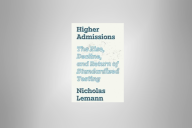You have /5 articles left.
Sign up for a free account or log in.
Innovation in learning catalyzed by technology operates most productively when centered on a physical space.
I think all of us in academic technology can learn a great deal from the model that some language / resources centers adopt. The model that I have observed, and which I think the language lab world has evolved toward, includes these four elements:
1. A Focus on Pedagogy and Learning: Language labs and academic computing departments stress the "learning" side of learning technology. Any of the tools or platforms we use, any of our technologies, are only bridges to bring us closer to the goal of active learning. This focus plays out in strong collaborations with campus teaching and learning centers, the library, and academic computing departments.
2. Comprehensive Services for Course Design, Development and Instruction: My sense is that language labs, being "place-based" units, are well-positioned to morph into places where faculty (and sometimes students) can get all the services, tools, consulting, and support they need for their courses. The shift from traditional language carrels and tape decks to computers has opened up opportunities for editing, media, and digitization services, as well as small group interactions and collaborations. Traditional language requirements can still be served, while at the same time a range of new services and tools can be supported.
3. One-stop shopping for faculty: I've seen a model where faculty can get help across the range of their needs - from hardware to software. Many people, including instructors, learn most effectively in the context of one-on-one personal consultations. The development of long-term relationships between instructors and learning technology professionals builds a deep bond of trust, allowing both parties to collaborate effectively.
4. A Service Oriented Model: Effective place-based teaching and learning resource centers are strongly service-oriented. The professionals staffing these units measure their success against how well their constituents are served, in addition to the degree of innovation and active learning opportunities that can be introduced into courses through partnering with instructors. This service orientation translates into (almost) never "passing off" an instructor to another unit or department unnecessarily; instead doing whatever it takes to solve the issue at hand. A service orientation is proactive and flexible, combining strong social intelligence with highly developed technical and pedagogical skills.
In a previous blog post I listed "language labs" as one of 10 obsolete learning technologies. The response to this post was illuminating, as in my mind I was picturing the old language lab carrel that I assumed have been supplanted by language resource centers.
So to be clear, and for the record, in my opinion the model of the language resource center is one that should be expanded and adapted to serve all disciplines. The place-based advantages of resource centers could be replicated by building on the model to create discipline-specific centers for instructional partnering and support. An alternate model would be to expand place-based resource centers into cross-disciplinary teaching centers, bringing in academic technologists and other learning professionals.
Resource centers may indeed serve the traditional function of traditional, carrel-based language labs, but since workstations and software can now perform this function it seems that the mission and abilities of these place-based centers have expanded. Still, I should have been more clear - and for that I apologize. I hope to utilize this blog as an opportunity to discussion and collaboration with learning professionals across the higher ed. spectrum. I'll be interested to hear the response to this blog post from my colleagues who work in and run language labs and language resource centers.








